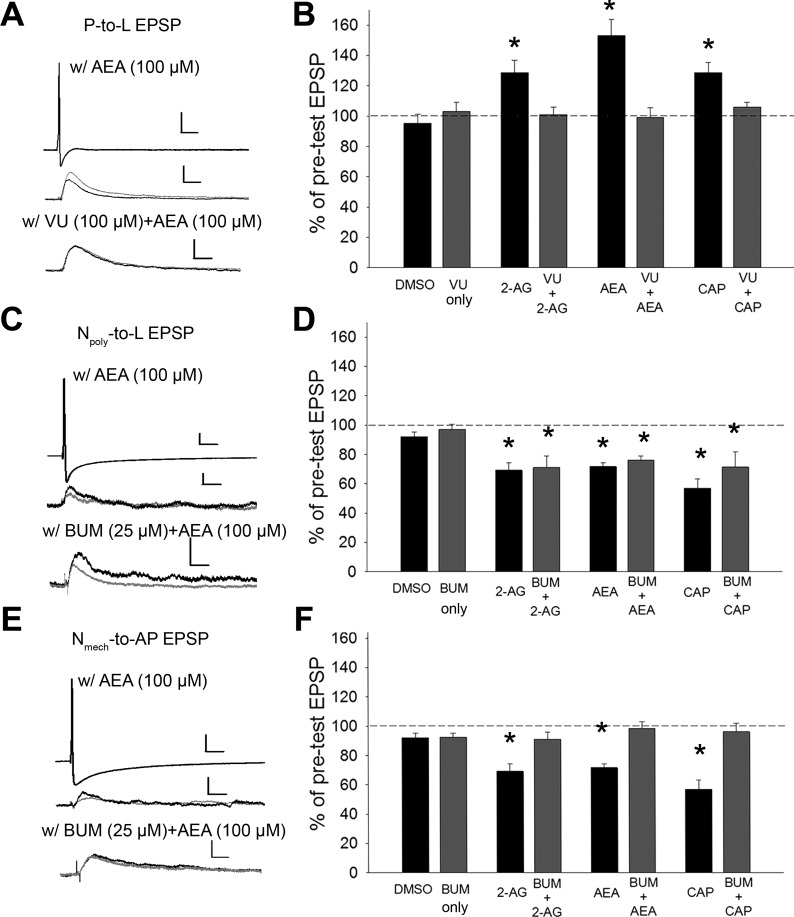Fig. 3.
Manipulating Cl− homeostasis alters endocannabinoid-mediated synaptic plasticity. A, C, and E, top: example of changes in EPSP amplitude elicited by either the P (A), Nmech (C), or Npoly neuron (E; scale bar = 20.0 mV/50 ms), following AEA (middle; scale bar = 2 mV/50 ms for P and 1 mV/50 ms for Npoly and Nmech), AEA + VU 0240551 (VU) (A), or AEA + bumetanide (BUM) (C and E) (bottom; scale bar = 2.0 mV/50 ms for P and Npoly and 1.0 mV/50 ms for Nmech). Black and gray traces are pre- and posttest EPSPs, respectively. B, D, and F: mean ± SE EPSP (%pretest amplitude) following vehicle, endocannabinoid, or CAP treatment with or without VU or BUM. B: in P synapses, 2-AG-, AEA-, and CAP-elicited potentiation was blocked by VU. D: BUM did not affect endocannabinoid- or CAP-mediated depression in Npoly synapses. F: in Nmech synapses, endocannabinoids- and CAP-mediated depression was blocked by BUM. For all three synapse types, no change in EPSP amplitude was observed in the vehicle control (0.01% DMSO) or in the VU- or BUM-only groups. *Statistically significant differences based on one-way ANOVA with Student-Newman-Keuls post hoc test (see results); n = 5 (different animals) for all treatment and control groups.

